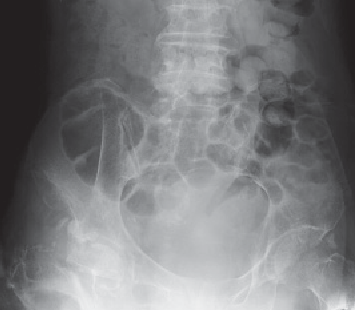The rectosigmoid junction is a part of the large intestine that connects the sigmoid colon to the rectum. It is located in the lower left quadrant of the abdomen, near the pelvis. The sigmoid colon is a curved section of the large intestine that connects the descending colon to the rectosigmoid junction. The rectum is the final segment of the large intestine that connects to the anus. The rectosigmoid junction plays an important role in the elimination of waste products from the body. As stool passes through the sigmoid colon, it is gradually dehydrated and compacted, forming solid feces. When the feces reach the rectosigmoid junction, the muscles of the colon contract, propelling the feces into the rectum and triggering the urge to defecate.
Function
The rectosigmoid junction is a crucial part of the large intestine that performs several important functions in the digestive process. Its main functions are:
Storage of feces
The rectosigmoid junction serves as a temporary storage site for feces before they are eliminated from the body. The muscles of the rectum and anus are designed to hold fecal matter until a suitable time and place for defecation.
Formation of solid feces
The rectosigmoid junction plays a key role in the formation of solid feces from the liquid waste material that enters the large intestine. As the feces pass through the sigmoid colon, they are gradually dehydrated and compacted, forming a more solid consistency.
Elimination of waste products
The rectosigmoid junction is responsible for propelling fecal matter from the large intestine into the rectum and triggering the urge to defecate. This process is initiated by the contraction of the muscles of the colon and rectum.
Absorption of water and electrolytes
The rectosigmoid junction absorbs water and electrolytes from the fecal matter, which helps to regulate the balance of fluids and electrolytes in the body.

Location
The rectosigmoid junction is located in the lower left quadrant of the abdomen, close to the pelvis. It is situated between the sigmoid colon, which is the S-shaped part of the large intestine, and the rectum, which is the final segment of the large intestine before the anus. The rectosigmoid junction is approximately 15-20 cm (6-8 inches) long and is located at the level of the third sacral vertebra, which is near the bottom of the spine.
Polyp
A rectosigmoid junction polyp is a growth that arises from the lining of the rectosigmoid junction, which is the area where the sigmoid colon connects to the rectum. These types of polyps are typically found during a routine colonoscopy, which is a procedure used to examine the colon and rectum for abnormalities.
Rectosigmoid junction polyps can be either benign or malignant, and their size and shape can vary. Some polyps are small and have a stalk-like base, while others are larger and have a broader base. Most polyps do not cause any symptoms, but some larger ones can cause bleeding or obstruct the bowel.
If a rectosigmoid junction polyp is found during a colonoscopy, it is typically removed during the same procedure. This is done using a specialized tool that is passed through the colonoscope. The polyp is either snared or cut off and then sent to a laboratory for analysis.
Cancer
Rectosigmoid junction cancer is a type of cancer that originates in the rectosigmoid junction, which is the area where the sigmoid colon connects to the rectum. It is a subtype of colorectal cancer, which is the third most common cancer diagnosed in both men and women.
Rectosigmoid junction cancer usually develops slowly over many years, starting as a small polyp or growth on the inner lining of the colon or rectum. Over time, the cells in the polyp may become cancerous and begin to grow and spread. The most common symptoms of rectosigmoid junction cancer include abdominal pain, rectal bleeding, changes in bowel habits, and unexplained weight loss.
The diagnosis of rectosigmoid junction cancer is typically made through a combination of medical imaging tests, such as CT scans or MRIs, and biopsies of the affected tissue. Treatment for rectosigmoid junction cancer usually involves a combination of surgery, chemotherapy, and radiation therapy. The specific treatment plan depends on the stage and location of the cancer, as well as the overall health of the patient.
The best way to prevent rectosigmoid junction cancer is through regular screening for colorectal cancer, which can detect and remove precancerous polyps before they become cancerous. The American Cancer Society recommends that adults at average risk for colorectal cancer begin screening at age 45, while those at higher risk may need to start screening at an earlier age.
